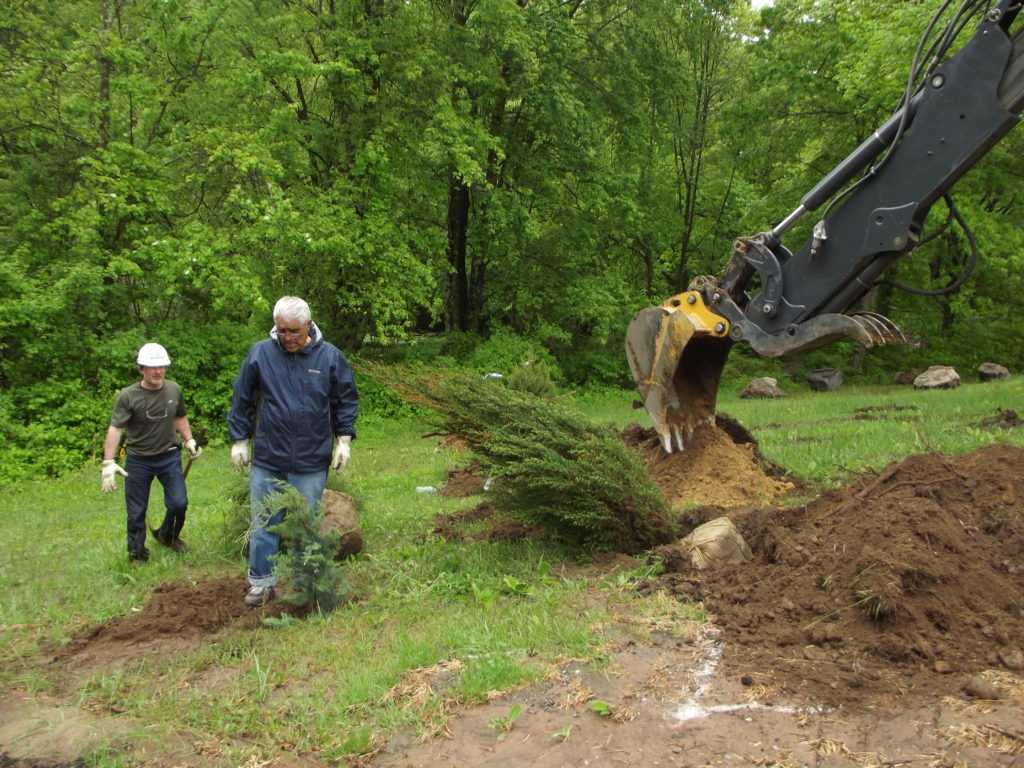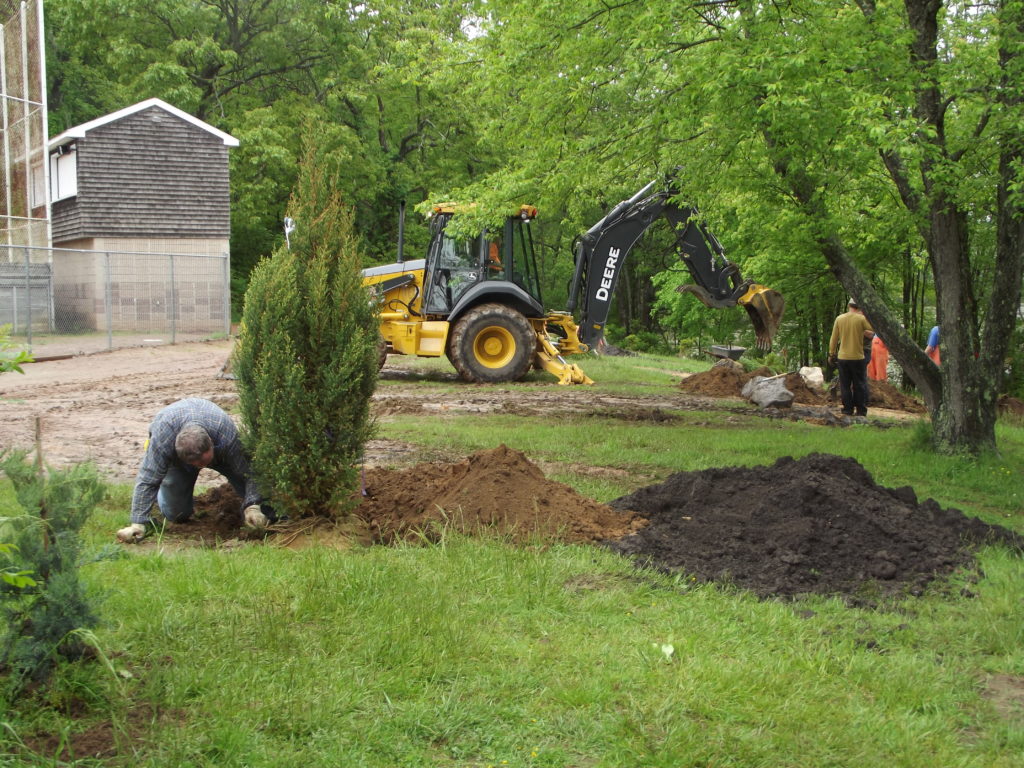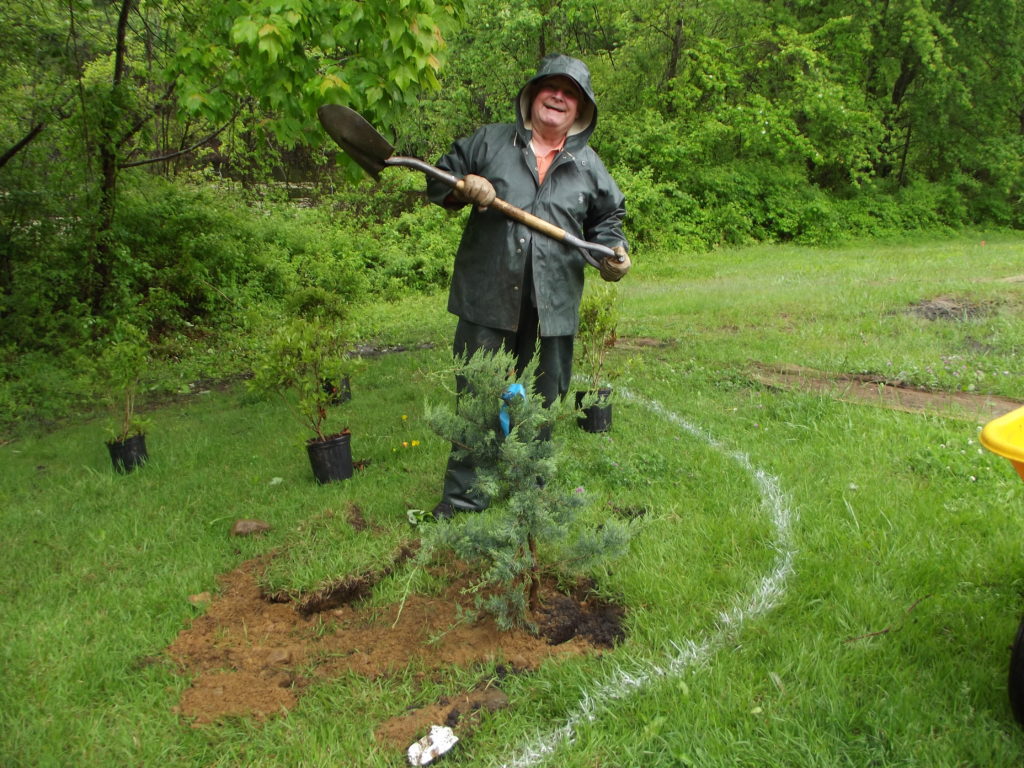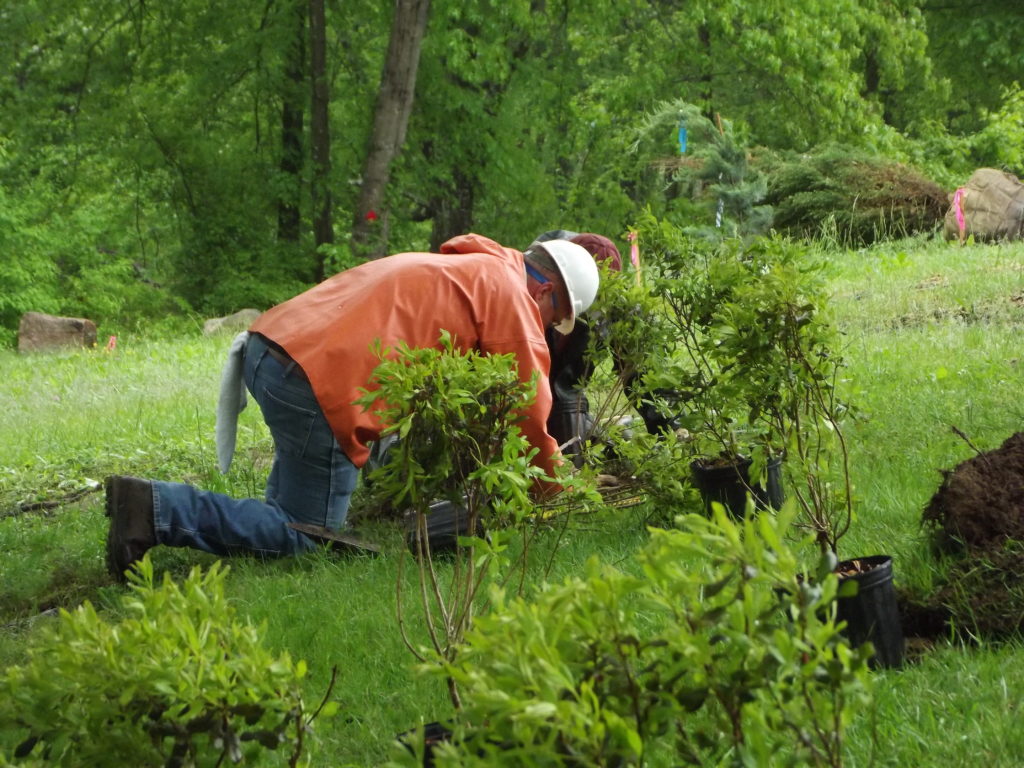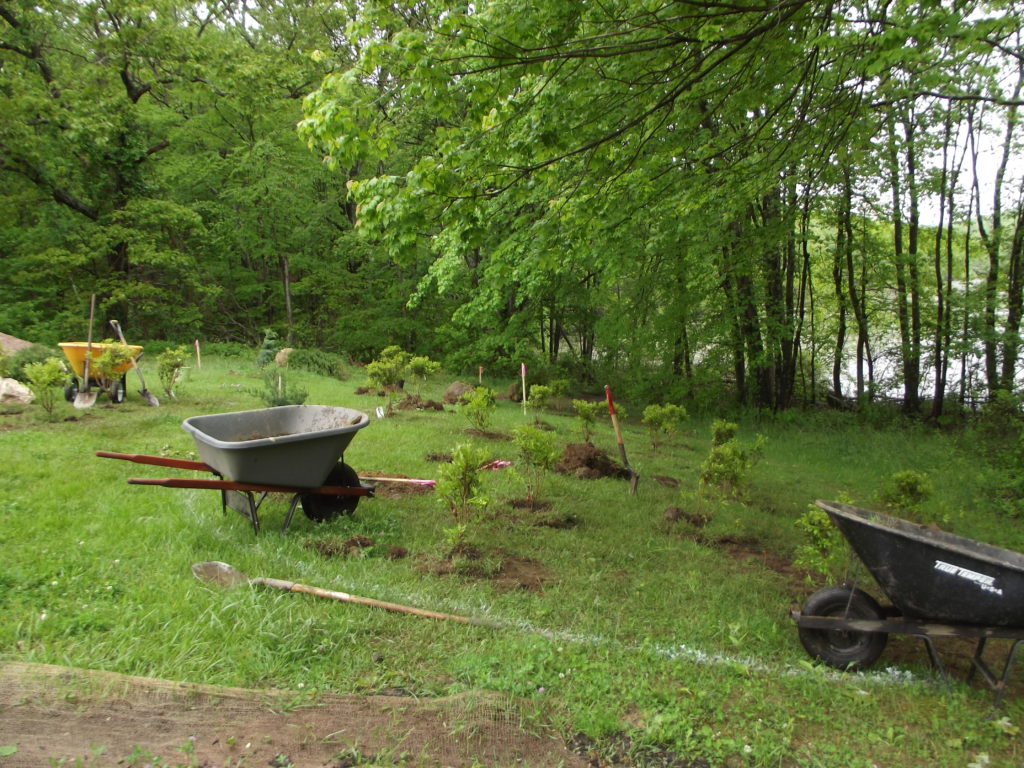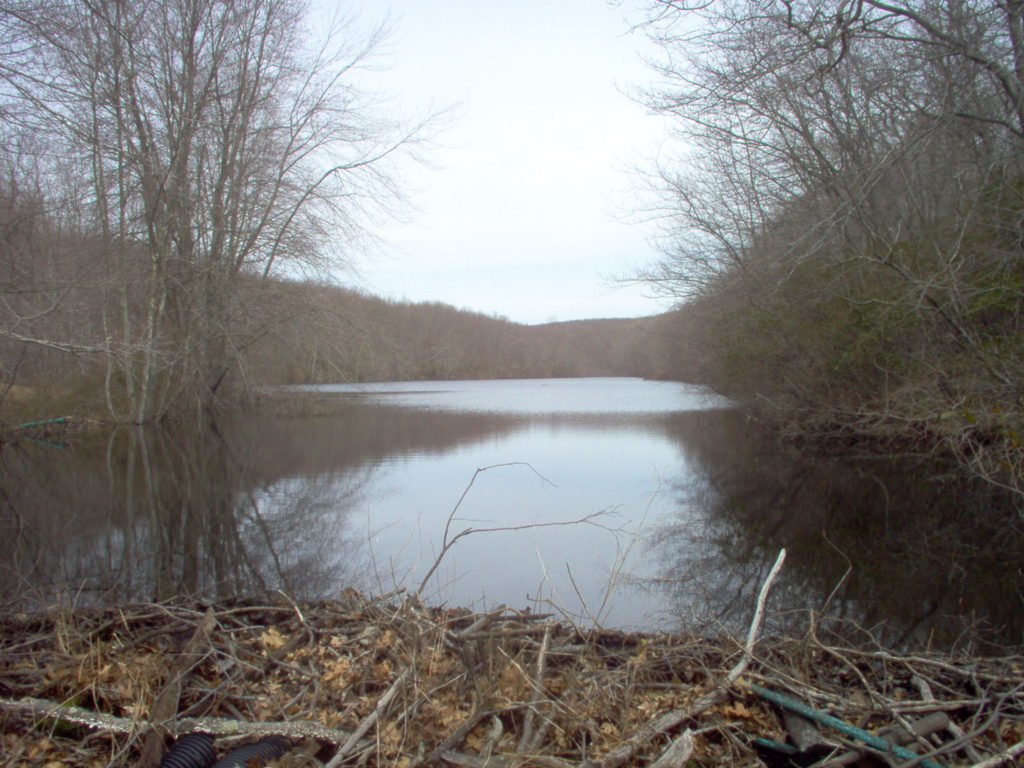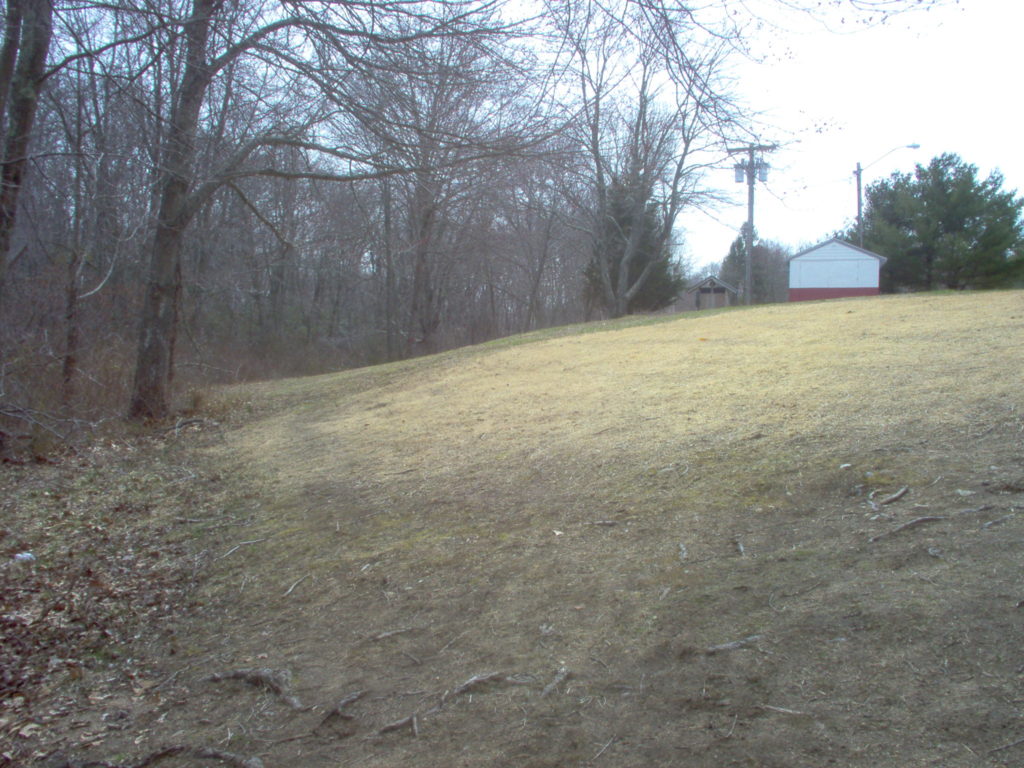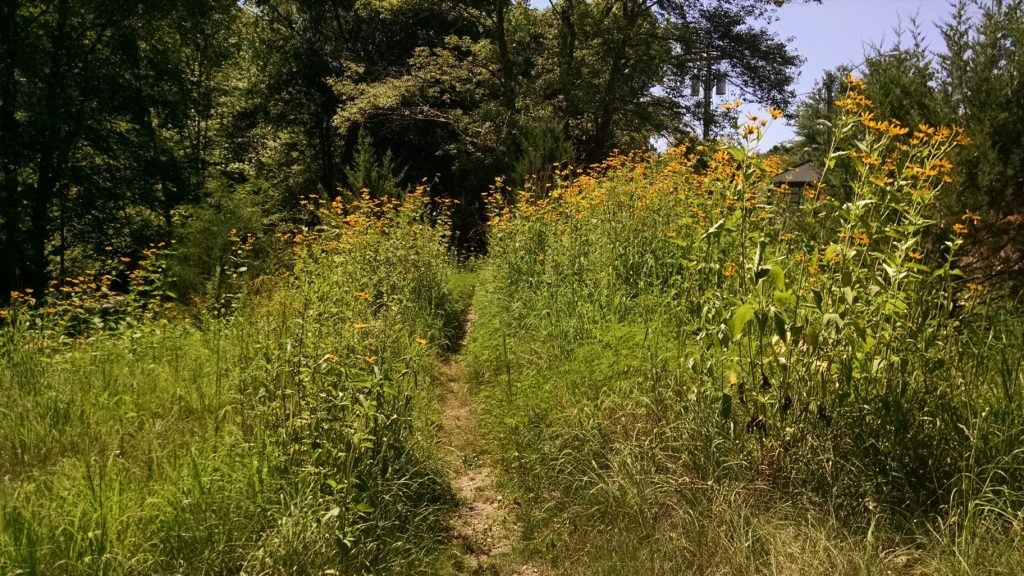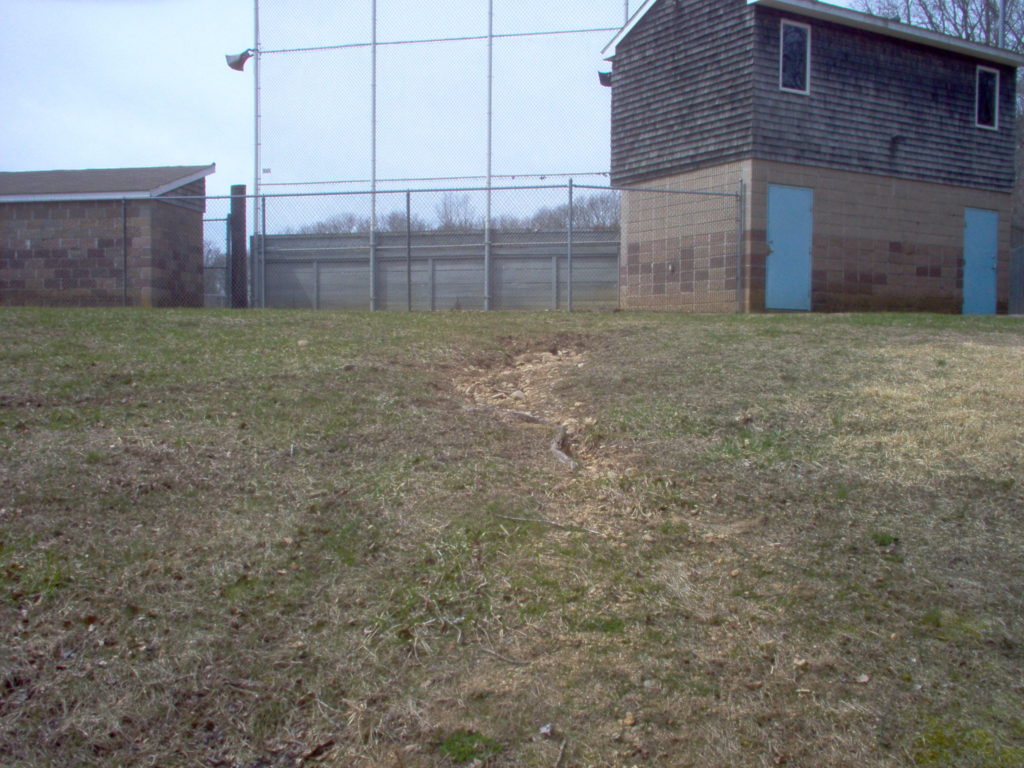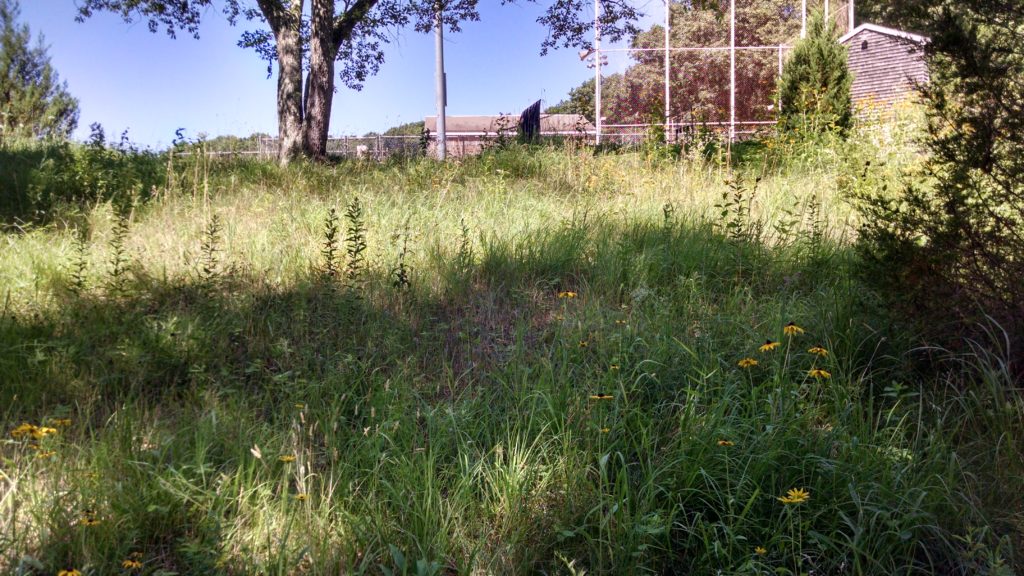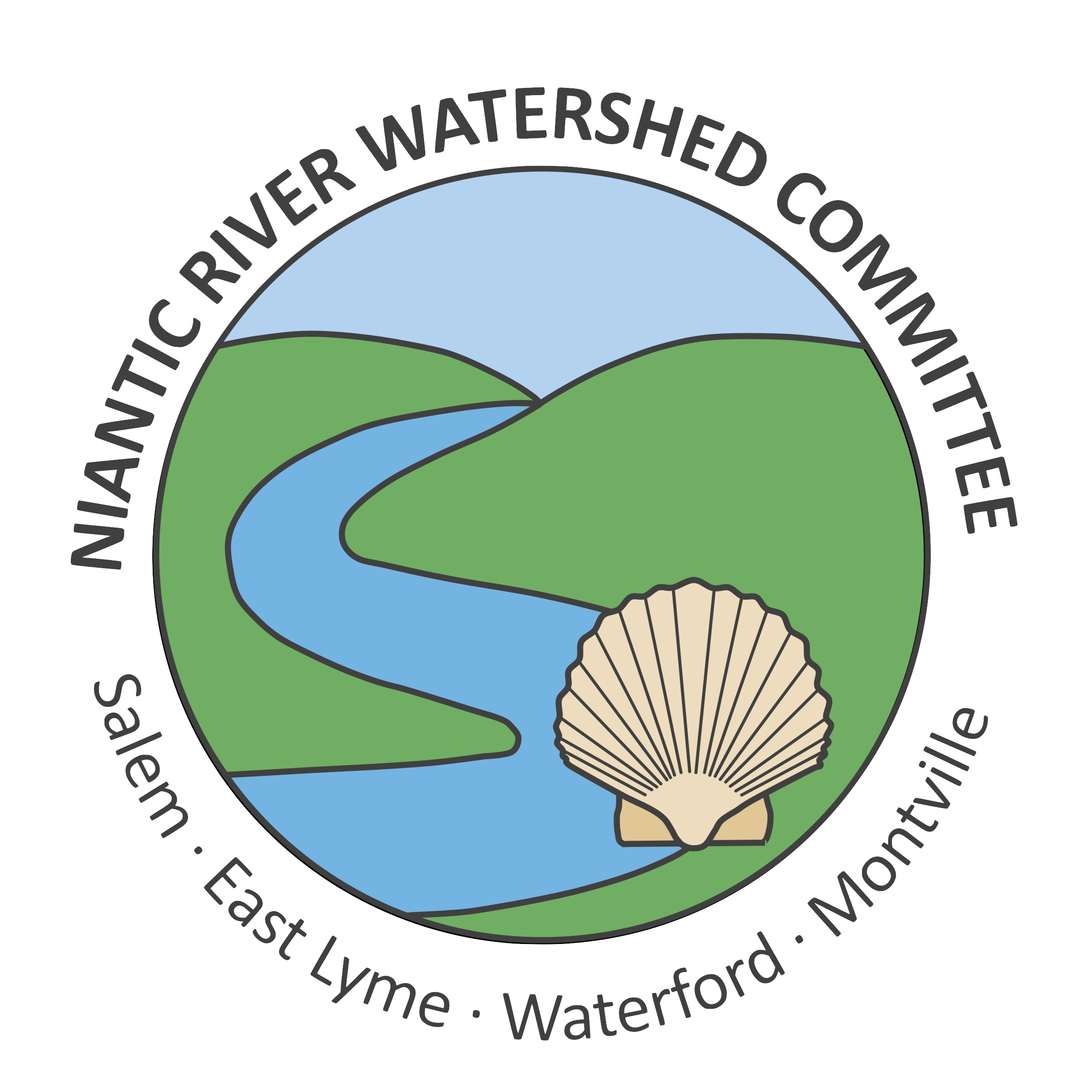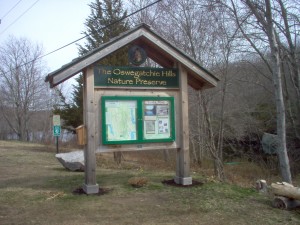In 2012, the Friends of Oswegatchie Hills Nature Preserve, the Town of East Lyme and the Niantic River Watershed Committee partnered with a local landscape architect to restore the riparian buffer along the west shore of Clark Pond. The grass-covered hillside to the west of the pond was subject to runoff and erosion from an adjacent park. Eroded materials washed downhill into Clark Pond, creating gullies and degrading both the pond bottom and the stream bed downstream of the pond. With funding from the Les Mehrhoff Plant Biodiversity Preservation Grant awarded by the Connecticut Association of Wetland Scientists (CAWS), the project partners designed and installed a riparian buffer planting, comprised of native grasses, perennials and shrubs, to stabilize the slope and prevent erosion. On a rainy day in May, volunteers from the Millstone Environmental Lab Environmental Stewardship Team cleared invasive plants, set landscaping boulders and assisted with planting almost 100 shrubs and trees, including eastern red cedar, bayberry, serviceberry, silky and grey dogwood, and sweet pepperbush. These native plants provide food and cover for wildlife, and enhance the Preserve for visitors and local wildlife alike.
